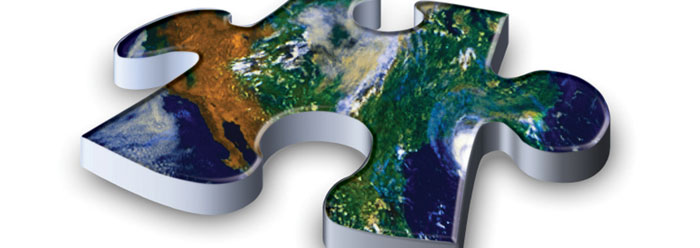There is no secret method for conducting creation research. It requires the same nose-to-the-grindstone effort that all scientific investigation requires--scholarly study, mathematical rigor, laboratory precision, and careful analysis.
But creation research suffers from the same disadvantage that evolutionary research does in that both examine events that happened in the unobserved past, outside the reach of observational science. Both are historical reconstructions.
Keep in mind that both sides study the same data. The big difference between them exists in the interpretation process. Evolutionary scientists start with the assumption of past uniformity, characterized by the slogan "the present is the key to the past." This means a uniformity of natural law, with no interruption of natural processes. Perhaps rates of processes have changed somewhat, but the laws have not.
Creation scientists agree that natural law governs processes today and throughout recent history, but hold that origins events were different in kind. The natural laws that operate today cannot account for them; supernatural processes were required, along with natural processes operating at rates, scales, and intensities far outside modern limits. Based on the clear teaching of Scripture, we know that God used such supernatural processes, and while we don't invoke them to explain events in the present, we are justified in calling on them for one-time origins events in the past.
Three great worldwide events happened in early earth history that affected all of reality, and without including them in our thinking and explanatory models we have no chance of properly interpreting the data. These events are:
- The creation of all things in the beginning
- The curse on all creation because of Adam's sin
- The great Flood of Noah's day
Scripture claims that "in six days the Lord made heaven and earth, the sea, and all that in them is" (Exodus 20:11). What can be observed today that was not originally created during this supernatural event? Humans did not witness creation, but we were told of it by One who was there, and today we see the things that were created.
Likewise, we are told of a subsequent event that altered all of creation. Indeed, "the whole creation groaneth and travaileth in pain together until now" (Romans 8:22) because of the presence of sin and its penalty, death. Plants, animals, mankind, even the very earth came under this penalty. What possible system was exempt from its scope? Today we see its effects all around us.
Later, the great Flood restructured the entire earth, as "the same day were all the fountains of the great deep broken up, and the windows of heaven were opened" (Genesis 7:11). Today we stand on flooded terrain. Nowhere on earth can we view results of uniformitarian processes except for those that have occurred since the Flood. As with the other early earth-shaping events, we did not see the Flood itself; but we can see its aftereffects.
A fourth event followed the Flood that impacted only mankind--that of the dispersion at Babel. But in a similar fashion, we will never fully understand human origins, migrations, genetics, or languages without considering Babel. "From thence did the Lord scatter them abroad upon the face of all the earth" (Genesis 11:9). All modern nations and peoples are descended from those scattered at Babel.
As you can see, these events are essential in making sense of the present scientific data. We can be assured they did happen, for they are all clearly taught in the Creator's account of earth history. Thus we can be confident that they provide a sure foundation for scientific research.
* Dr. Morris is President of the Institute for Creation Research.
Cite this article: Morris, J. 2008. The Keys to Creation Research. Acts & Facts. 37 (2): 13.




